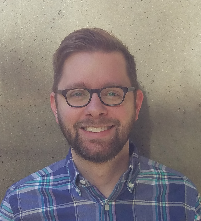MSACL 2024 Industry Workshop Presentation
*This Podium Presentation is occuring in the context of an Industry Workshop that starts at the time below.
Its actual start time may be up to 40 minutes later, depending on order of presentation if there are multiple presentations planned by the workshop host.
| Workshop Host: | Agilent Technologies |
| Day: | Tuesday March 19 |
| Time: | 12:15* |
| Location: | San Carlos 3 (Marriott > Mezzanine | Stairs from Lobby or SkyBridge from Conference Ctr) |
|

|
|
Intact Protein Quantitation – using iFAMS Quant+: Gabor-Transform Software for Automated Biomolecular Mass Spectrometry Signal Deconvolution and Quantitation
|

|
James Prell, PhD
University of Oregon
|
Presenter Bio: Associate Professor James S. Prell has been on the faculty of the Department of Chemistry and Biochemistry at the University of Oregon since 2014, where his laboratory develops ion mobility-mass spectrometry experiments, computational methods, and theory to explore both fundamentals and applications of bioanalytical IM-MS. With a background in ion spectroscopy and nanocalorimetry and ultrafast solid-state nanoscience from his PhD and postdoctoral work at UC Berkeley, he has investigated mechanisms of electrospray ionization, patterning of nanodroplet water networks by embedded ions, and the relationship between condensed-phase and gas-phase structures of proteins and their complexes. His work collaborates with academic, clinical, and industry researchers around the world to advance novel mass spectrometry signal processing methods, tissue imaging, pharmaceutical drug quantitation, and understanding of biomolecular ion structure-thermochemistry relationships.
|
|
|
|
|
Summary In many state-of-the-art biological mass spectrometry applications, from antibody drug quantitation in human serum samples to mass spectrometry imaging of tissues, deconvolution and accurate quantitation of overlapped signals can be extremely challenging. However, Gabor-Transform (GT)-based signal processing can provide a "hidden" dimension of signal separation and enables highly automated charge state assignment, accurate mass determination, and quantitation, even when charge state envelopes are broad, and many tens of distinct analytes are present in the same mass spectrum. In this talk, we describe major advances in our GT software, iFAMS Quant+, that significantly accelerate and automate characterization and quantitation, including the ability to directly interact with retention time data and batch-process files from Agilent LC/MS platforms. Highlights include a "Slicer" tool for instant signal deconvolution and accurate mass estimation, deconvolution refinement to identify and remove signal artifacts, charge state envelope adjustment, and the ability to rapidly select/deselect charge states and masses for optimized quantitation. |
|

